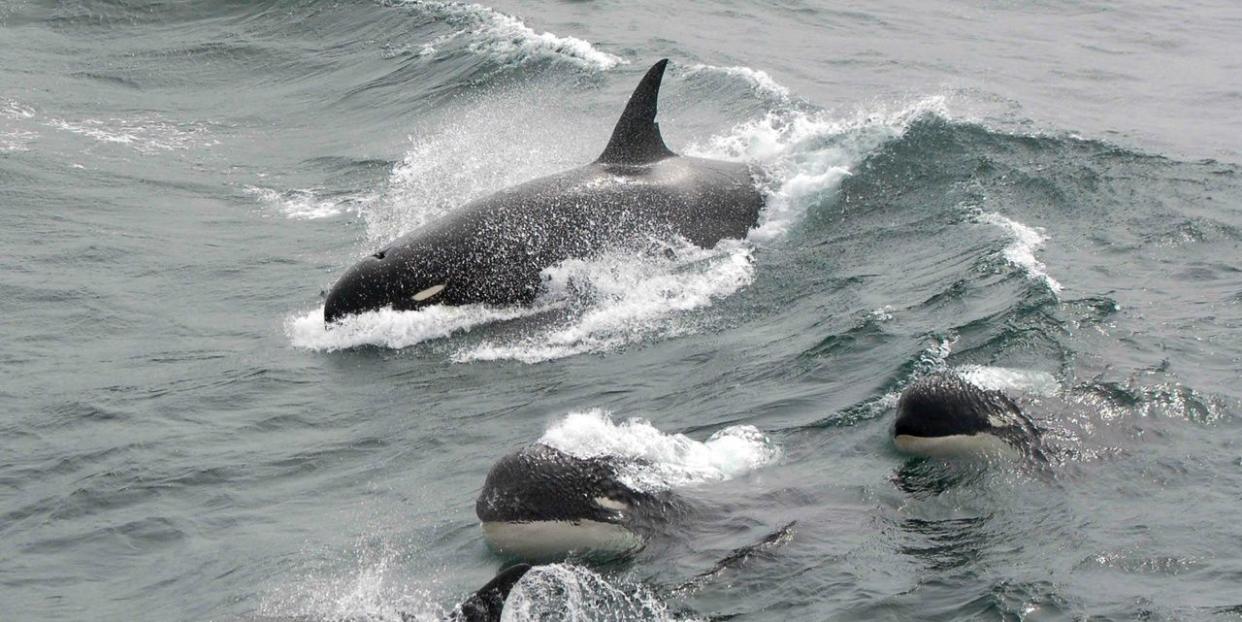Scientists Spot Mysterious Unknown Breed of Killer Whales

Earlier this year in January, scientists working off the coast of Chile spotted something exciting and unusual: Whales that didn't look like anything they had seen before, that have appeared only in stories. Now known as Type D whales, scientists at the National Oceanic and Atmospheric Administration (NOAA) will use genetic sample to determine they actually constitute a new species.
“We are very excited about the genetic analyses to come. Type D killer whales could be the largest undescribed animal left on the planet and a clear indication of how little we know about life in our oceans,” says Bob Pitman, a researcher from NOAA Fisheries’ Southwest Fisheries Science Center in La Jolla, California, in a press statement.
Using a cross dart, three tiny pieces of skin taken have been taken harmlessly from the whales. These samples will play a crucial role in the Type D whale's classification. “These samples hold the key to determining whether this form of killer whale represents a distinct species,” says Pitman.
Stories of Type D whales go back at least as far as 1955, when 17 whales were stranded on the coast of Paraparaumu, New Zealand. They seemed similar to killer whales (Orcinus orca), but there were noticeable differences. These differences included, according to NOAA, "rounded heads, a narrower and more pointed dorsal fin, and a tiny white eyepatch." There was no known whale that matched that description.
Scientists at the time felt these whales were genetic aberrations of the well-known orca. But flash forward to 2005, when a French scientist shows Pitman pictures of odd-looking whales in the Indian Ocean. Their bulbous heads and eye patches indicate that those whales might not have been an aberration after all, and that these whales might be more widespread than anyone knows.
As the years pass, both air travel and photographic technology improves. Travel to Australia, New Zealand, and even Antarctica increases, and the ability to document the whales does so with it. Pitman and colleagues start creating files of killer whale images from the Southern Ocean. From the tens of thousands of photos, six additional sightings of Type D whales were found.
Trends started to emerge: These whales lived offshore but tended to avoid the coldest water, even though they lived near the Antarctic. They were living in areas known for brutal winds. Chilean fishermen began complaining of Type D whales wrecking havoc on their lines.
For Pittman, the mounting evidence required study. Aboard the research vessel Australis, an international group of whale experts began looking for the Type D whale off the coast of Chile. It wasn't easy: the brutal winds, 40 to 50 knots of off Cape Horn, were enough to wear down even the most eager whale hunter.
But when the wind momentarily cooled, the team found their opening. They found Type D whales. And they were determined not to waste their opportunity.
Amidst a group of 30 or so whales, vocalization expert Rebecca Wellard towed a hydrophone behind the boat to record Type D calls. Cameras mounted on the hydrophone captured pictures of the rare whales.
And now the DNA samples will start to unveil some truths about animals shrouded in myth for over 60 years.
Source: NOAA
('You Might Also Like',)

